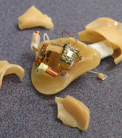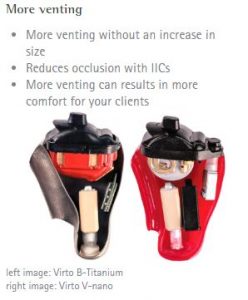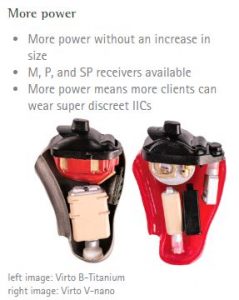Time to Read: 7 minutes
Most people first discovering the need for hearing aids desire invisible hearing aids. Unfortunately, Invisible hearing aids come with a few inherent issues, which can severely affect performance and reliability. Phonak has perfected a new production technique using Titanium, which solves many of the issues. More on this later.
Let’s look at where we were first, before looking into the future.
How thing used to be and still are with Invisible hearing aids
It is not uncommon for invisible hearing aids (IIC) to require repair by the manufacturer 2 or more times a year! Compare this to over the ear hearing aids that might only require repair one every few years. Now, you can start to understand why clinicians aren’t always keen on invisible solutions. You can explore our article on the pros and cons of invisible hearing aids by clicking here.
Invisible hearing aids have a few inherent issues due to their size and position in the ear. The first issue is that they need to be very small, yet still contain all the electronics and battery to make them work. The compromise is usually to make the acrylic shell into which the electronics fit really thin, which can then lead to expensive shell breakages. Alternatively, you can stick to thicker shells, but then have a problem, where your hearing aids aren’t as small as those from manufacturers willing to risk thinner shells.
A second problem is that the electronics are seating deep in the canal, which is hot, humid and full of ear wax. This leads to breakages of microphones and speakers. Speakers are easier to protect using wax filters, but microphones often scoop up ear oil and wax as it is removed from the ear. This can lead to more repair issues.
A third problem is that some people are simply allergic to the Acrylic used in the manufacture of these hearing aids. They have to often go to great expense to custom coat their hearing aids in materials like gold or titanium to be able to use their hearing aids for long periods of time.
In the canal hearing aids have been made the same way, using acrylic since the start. Sure, we have moved from light curing moulds to 3D printing acrylic, but apart from making smaller aids possible, nothing else has changed until….
Invisible Hearing aids - the future
Phonak has perfected the mass production of a medical grade custom Titanium hearing aid shells while simultaneously redesigning their invisible hearing aids to be smaller with more durable electronics. The Titanium is the first in the canal hearing aid to achieve an IP68 water resistant and dust proof rating.
What is Titanium?
Titanium is an ultra-strong, non-allergenic metal often used in medical implants.
Phonak has perfected a 3D printing system printing shells in Titanium rather than the commonly used acrylic. This has resulted in them being able to make hearing aids shells that are 15 times stronger, yet only half as thick as acrylic hearing aid shells.
B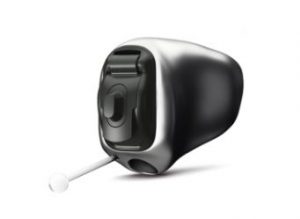 ut they did not stop there. They also redesigned their electronics to be 60% smaller and repositioned their microphone to be much more protected against wax. They also carefully designed the texture of the 3D printing to be resistant to slipping out of the ear, while still being as comfortable as an acrylic shell.
ut they did not stop there. They also redesigned their electronics to be 60% smaller and repositioned their microphone to be much more protected against wax. They also carefully designed the texture of the 3D printing to be resistant to slipping out of the ear, while still being as comfortable as an acrylic shell.
To top it off, they changed the way clinicians take impressions using their proprietary designed Easyview Otoblock. This means clinicians can take impressions that are around 6mm deeper, resulting in smaller hearing aids still.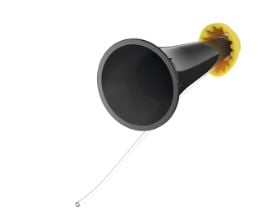
Combine all this with Phonak's Belong Platform and you have a truly remarkable revolution in invisible custom hearing aids.
Here are the benefits Phonak’s Titanium brings to the market:
- Much more durable small hearing aids, meaning more time in your ears and less in the repair lab.
- Better performance from invisible in the ear hearing aids (IIC) using Phonak’s high performance automatic Autosense OS found in their Belong range of hearing aids.
- No more allergic reactions to the shell as Titanium is not known to cause reactions.
- Less Blocked feeling as venting can be made larger without risking the shell to break.
- 20% more battery life due to the reduced size of the electronics.
- Deeper, more comfortable and discreet fitting – 26% smaller overall
- More secure fitting – less slipping out of the ear due to the 3D printed texture.
- The ability to suit even Severe Hearing loss as there is more space in the shell to fit more powerful receivers (speakers).
- Fits more ears than before with a 64% improved fit rate.
The Titanium shell is currently available as the Virto B70-Titanium and Virto B90-Titanium only.
Make an appointment today to explore if the Titanium is the solution you have been waiting for.
